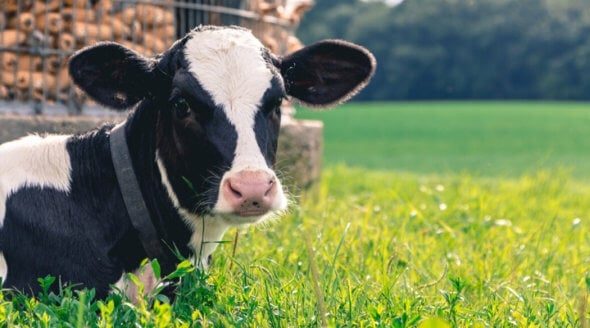All About Animals: Secondary Teachers: Lesson Plan 2: Time for Change?
Teachers’ Note: Hand out the information below to the class or read it aloud. Then ask whether religious leaders, recognising the changes in farming methods, should exhort their followers to reconsider how we celebrate our beliefs and substitute a meat-free meal for the traditional meat-inclusive one. This can be discussed in small groups or with the whole class.
Religions are steeped in tradition and these traditions date back to a time long before the advent of modern and factory farming methods. Read the information below and discuss in your group whether celebratory meals should be revised to reflect the reality of the methods used to obtain the meat at the centre of the meal.
Turkeys
Today, turkeys are reared inside windowless sheds with tens of thousands of birds crammed in. Sodden litter underfoot is soaked with weeks of urine and faeces and the birds have no choice but to waddle through it. And they do waddle. They can’t help it. The huge weight that they have been bred to carry puts enormous strain on their joints and as a result their hips degenerate. In the largest birds, this degeneration is widespread with around 70 per cent of birds suffering, not just discomfort but real pain.
One worker at a Bernard Matthews farm said: “They get leg problems here because the birds are so heavy the fluid in the knee joint goes septic and then starts to go black, like blood poisoning all up the leg. They won’t accept that down at the factory because that contaminates the whole line we just kill it and throw it out and it goes for dog meat or for maggots for fishing.”
When they reach slaughter weight, the birds are caught and stuffed into crates for their first and last journey beyond the filthy sheds. Frightened and already possibly in pain from the degeneration of their hips and legs, the birds get to breathe fresh air for the very first time. At the abattoir their legs are clipped into shackles on a moving line, their heads dipped into an electric current bath to stun them and whether they are conscious or not, the line moves constantly on and on towards the slaughterer with the knife in his hand. Some birds regain consciousness as their lifeblood drains from them. And shockingly, some birds are still conscious as they enter the scalding tank – a tank designed to loosen the feathers of the freshly-killed birds. Thirty-five million turkeys are killed every year in the UK, with many raised and killed specifically for Christmas celebrations.
Sheep
Sheep are not factory farmed in the sense of being locked in a shed and only seeing daylight when they are transported to slaughter. But they are factory farmed in the sheer scale of the business.
Sheep do not breed naturally; they are given hormones to force them to conceive when it suits the farmer. Consumers want ‘spring lamb’ on their supermarket shelves and as a result, ewes are made pregnant earlier than natural. Many ewes now give birth in the dead of winter to ensure that spring lamb is on the shelves in the spring, which is the time when the lambs should be born, not slaughtered. Think of a newborn lamb trying to survive being born on a freezing cold winter’s night and you’ll understand why thousands of them die of exposure.
Sheep bred for their meat are bred to have ‘multiple births’. But a ewe with triplets may not be able to feed all three and the smallest one may die within hours or days of birth.
Four million lambs die each year due to exposure, hypothermia, starvation and disease.
In many countries, most notably Australia, huge flocks are largely left to fend for themselves. One person may look after up to 10,000 sheep. Here, individual veterinary care is impossible.
Every year six million sheep are loaded onto boats in Australia bound for the Middle East. They are crammed into the cargo hold for a journey that can take three weeks. They must endure extreme weather conditions, storms and diseases that run rife inside the ships as sheep are forced to live in cramped, filthy conditions, standing in a sea of their own excrement. In 2002, 74,000 sheep died on the journey from Australia.

